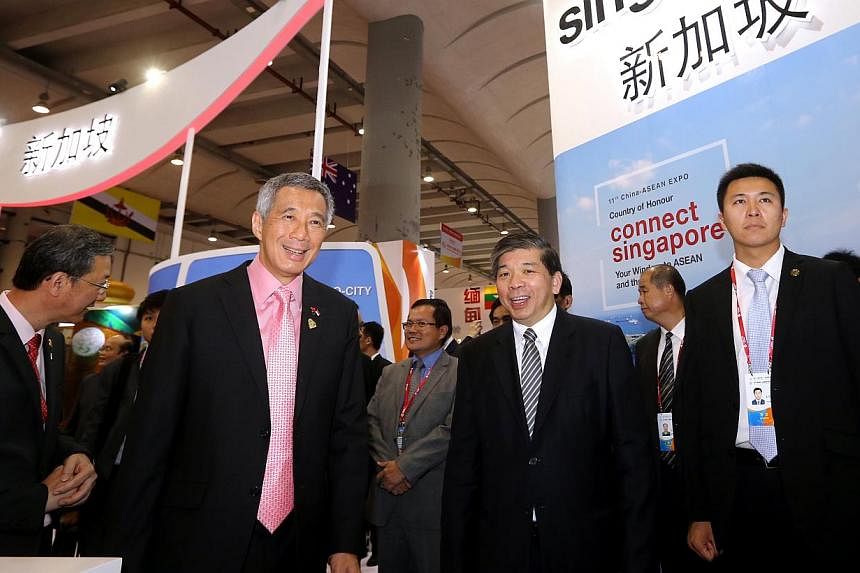CHINA and Asean should maintain the momentum of their regional integration and not let disputes overshadow the positives of their growing relationship, Prime Minister Lee Hsien Loong said yesterday.
Delivering the keynote speech at the opening ceremony of the 11th China-Asean Expo in Nanning, Mr Lee said the 10-member grouping and China should keep their difficult issues in perspective, and build momentum on regional integration even as they manage frictions and issues that arise from time to time.
Four Asean members have overlapping claims with China in the South China Sea. Tensions rose this year as the Philippines pursued a legal suit against China at the United Nations and anti-China riots erupted in Vietnam over a Chinese oil rig in a disputed area.
Executive Vice-Premier Zhang Gaoli, who also spoke at the expo, reiterated China's commitment to resolving the territorial disputes peacefully through bilateral negotiations between the claimants and deepening maritime cooperation with Asean members.
In his speech, Mr Lee pointed out how China-Asean economic cooperation and interdependence have grown exponentially in recent years.
Since they signed a free trade agreement (FTA) in 2005, trade has tripled, and Asean is now China's third-largest trading partner, he noted. By 2020, the goal is to boost two-way trade to US$1 trillion (S$1.26 trillion), and mutual investment by US$150 billion.
Mr Lee welcomed China's proposals to deepen China-Asean economic cooperation, such as upgrading their FTA, setting up an Asian Infrastructure Investment Bank to lend to emerging countries for their infrastructural development needs, and reviving the ancient Maritime Silk Road that winds through the South China Sea. Singapore looks forward to working with China on details of these initiatives, he said.
While some view the proposals as a bid by China to edge out the United States and Japan in influence in the region, Mr Lee made clear that closer Asean-China ties complement, rather than compete with, interdependence and integration in the wider Asia-Pacific.
"Today, a lot of Asean-China trade is in intermediate goods, which go into final products that are subsequently exported to third-country markets like the US and Europe," he said. "Therefore, just as Asean-China trade grows, so does trans-Pacific trade. In particular, both China-US and Asean-US trade are growing."
He said he was glad that Asia- Pacific Economic Cooperation (Apec) leaders will discuss how to realise a Free Trade Area of the Asia-Pacific at their summit in Beijing in November. Apec leaders have pledged to negotiate this mega free trade area by building on the free trade agreements concurrently being worked out in the region. These are the Regional Comprehensive Economic Partnership, spearheaded by China, and the Trans-Pacific Partnership, spearheaded by the US.
Yesterday, Mr Lee also attended a round-table dialogue with Chinese businessmen. The expo has designated Singapore as the country of honour this year. Mr Lee made a pitch for them to do business in Singapore, noting its business-friendly and globally connected environment, its understanding of both Chinese and Asean cultures, and Asean's huge growth potential.
He officiated at the opening of the Singapore Pavilion at the expo and met Thai Deputy Prime Minister and Foreign Minister Tanasak Patimapragorn on the sidelines of the expo. Mr Lee then left for Hong Kong, the last leg of his week-long trip to southern China.

